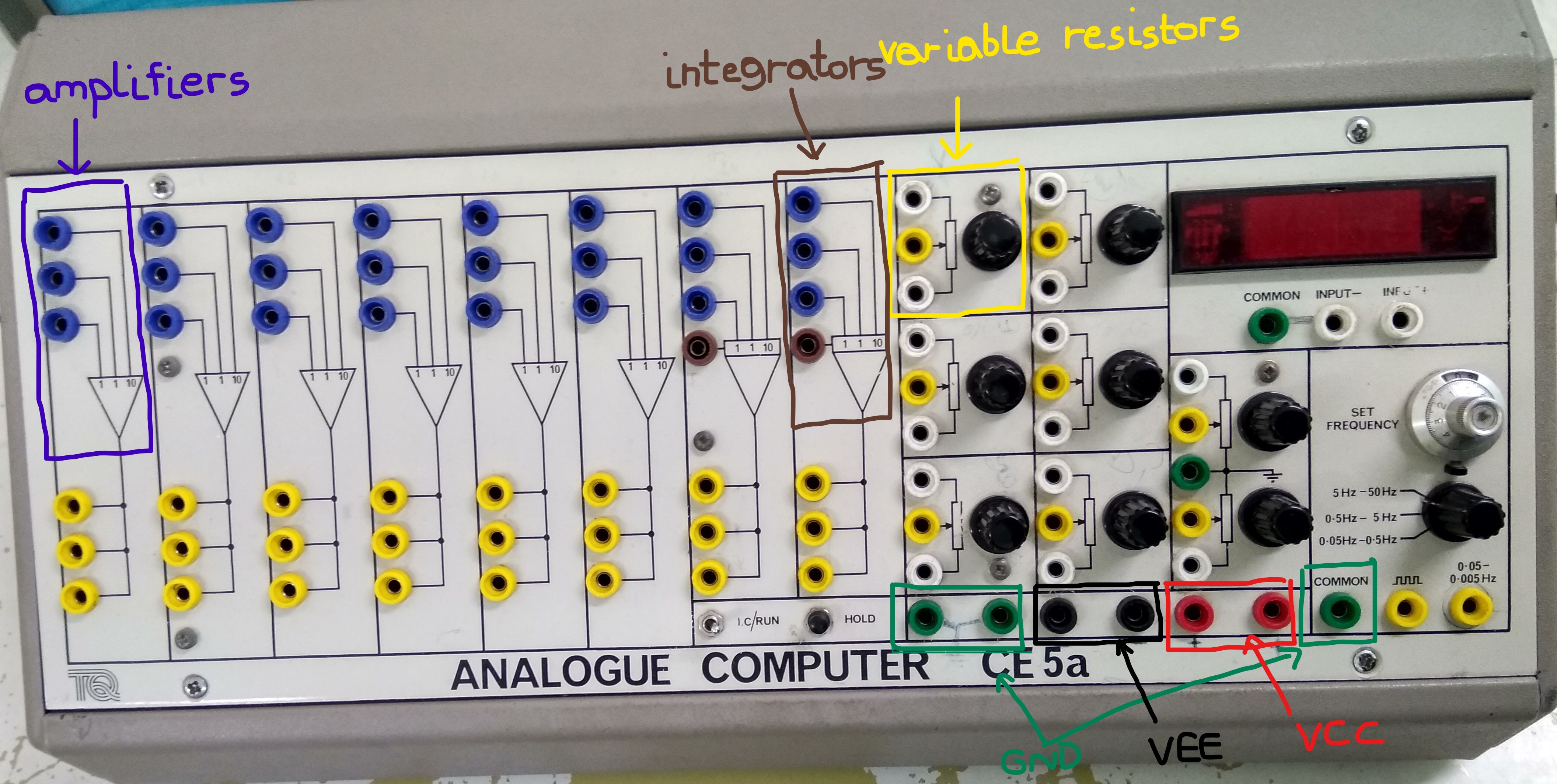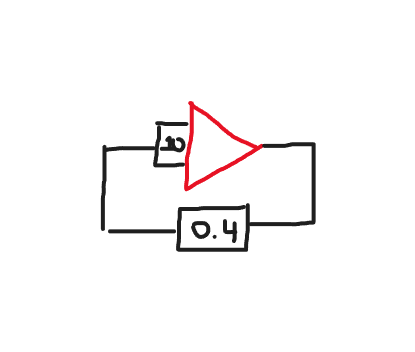Post History
I am studying for a test in control systems and we have a practical part which is to program a analog computer. Here is a picture of the analog computer: The variable resistor is basically a vo...
#3: Post edited
- I am studying for a test in control systems and we have a practical part which is to program a analog computer.
- Here is a picture of the analog computer:
- 
The variable resistor is basically a voltage divider between VCC and VEE and you can change the output voltage by changing the position of the rotary switch.- Suppose we have this block diagram
- 
We set the rotary switch to multiply the signal it sees by 0.4 then return to the input of a amplifier.Next to the rotary switch there are 3 pins the top pin and bottom pin are connected internally to VCC and VEE and the middle pin is the voltage division.When we are done setting the value of the rotary switch and connect the middle pin to the input of a amplifier and we are ready to measure the output voltage with a oscilloscope do we still keep the top and bottom pins plugged to power or not?Will I create a short if I keep the top and bottom pins plugged to power?
- I am studying for a test in control systems and we have a practical part which is to program a analog computer.
- Here is a picture of the analog computer:
- 
- The variable resistor is basically a voltage divider between VCC and VEE and you can change the output voltage by changing the position of the potentiometer.
- Suppose we have this block diagram
- 
- We set the potentiometer to multiply the signal it sees by 0.4 then return to the input of a amplifier.Next to the potentiometer there are 3 pins the top pin and bottom pin are connected internally to VCC and VEE and the middle pin is the voltage division.When we are done setting the value of the potentiometer and connect the middle pin to the input of a amplifier and we are ready to measure the output voltage with a oscilloscope do we still keep the top and bottom pins plugged to power or not?Will I create a short if I keep the top and bottom pins plugged to power?
#2: Post edited
- I am studying for a test in control systems and we have a practical part which is to program a analog computer.
- Here is a picture of the analog computer:
- 
- The variable resistor is basically a voltage divider between VCC and VEE and you can change the output voltage by changing the position of the rotary switch.
- Suppose we have this block diagram
- 
We set the rotary switch to multiply the signal it sees by 0.4 then return to the input of a amplifier.Next to the rotary switch there are 3 pins the top pin and bottom pin are for connected internally to VCC and VEE and the middle pin is the voltage division.When we are done setting the value of the rotary switch and connect the middle pin to the input of a amplifier and we are ready to measure the voltage with a oscilloscope do we still keep the top and bottom pins plugged to power or not?Will I create a short if I keep the top and bottom pins plugged to power?
- I am studying for a test in control systems and we have a practical part which is to program a analog computer.
- Here is a picture of the analog computer:
- 
- The variable resistor is basically a voltage divider between VCC and VEE and you can change the output voltage by changing the position of the rotary switch.
- Suppose we have this block diagram
- 
- We set the rotary switch to multiply the signal it sees by 0.4 then return to the input of a amplifier.Next to the rotary switch there are 3 pins the top pin and bottom pin are connected internally to VCC and VEE and the middle pin is the voltage division.When we are done setting the value of the rotary switch and connect the middle pin to the input of a amplifier and we are ready to measure the output voltage with a oscilloscope do we still keep the top and bottom pins plugged to power or not?Will I create a short if I keep the top and bottom pins plugged to power?
#1: Initial revision
Confusion in operation of analog computer
I am studying for a test in control systems and we have a practical part which is to program a analog computer. Here is a picture of the analog computer:  The variable resistor is basically a voltage divider between VCC and VEE and you can change the output voltage by changing the position of the rotary switch. Suppose we have this block diagram  We set the rotary switch to multiply the signal it sees by 0.4 then return to the input of a amplifier.Next to the rotary switch there are 3 pins the top pin and bottom pin are for connected internally to VCC and VEE and the middle pin is the voltage division.When we are done setting the value of the rotary switch and connect the middle pin to the input of a amplifier and we are ready to measure the voltage with a oscilloscope do we still keep the top and bottom pins plugged to power or not?Will I create a short if I keep the top and bottom pins plugged to power?


















